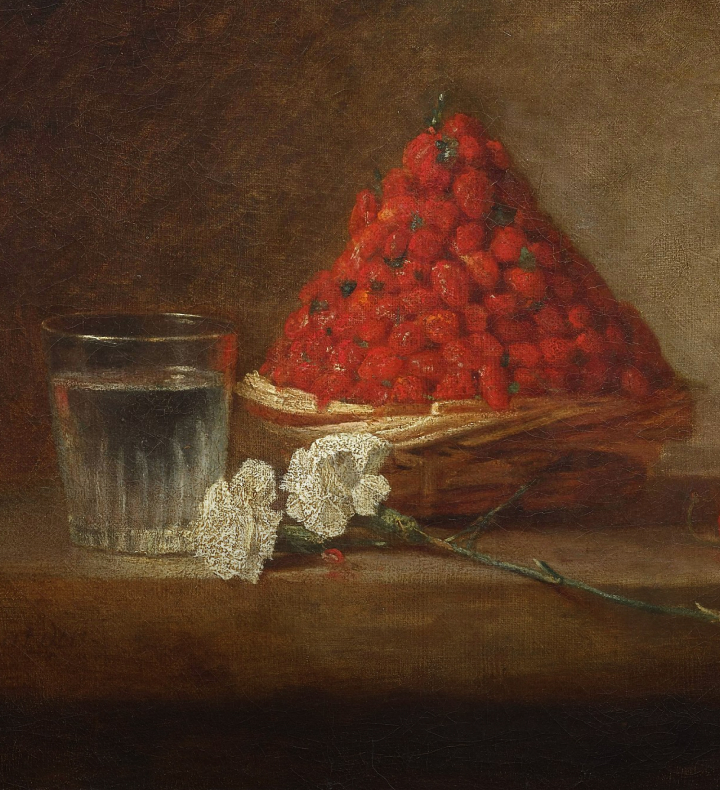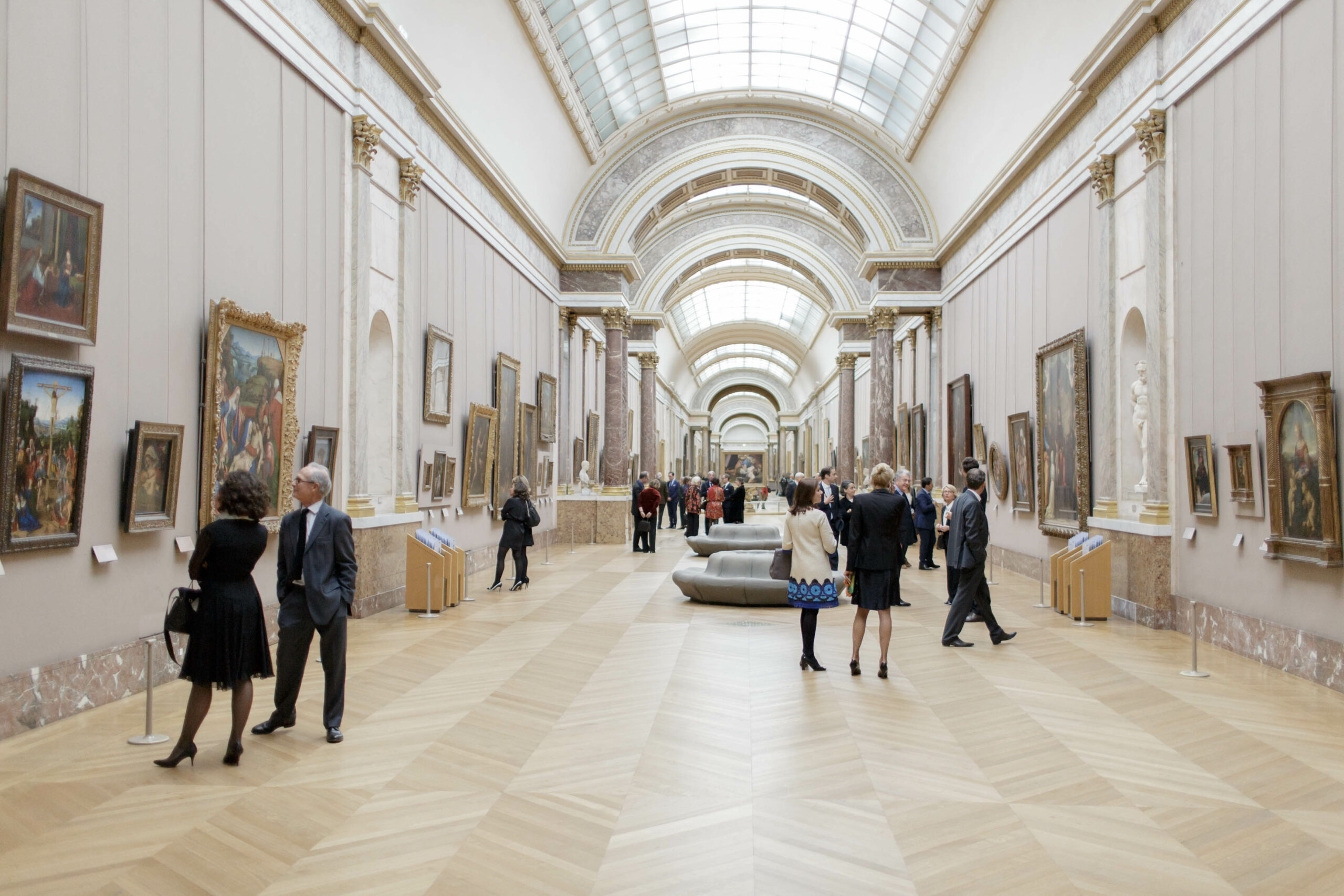Click on the pins to learn more
Jean Siméon
Chardin
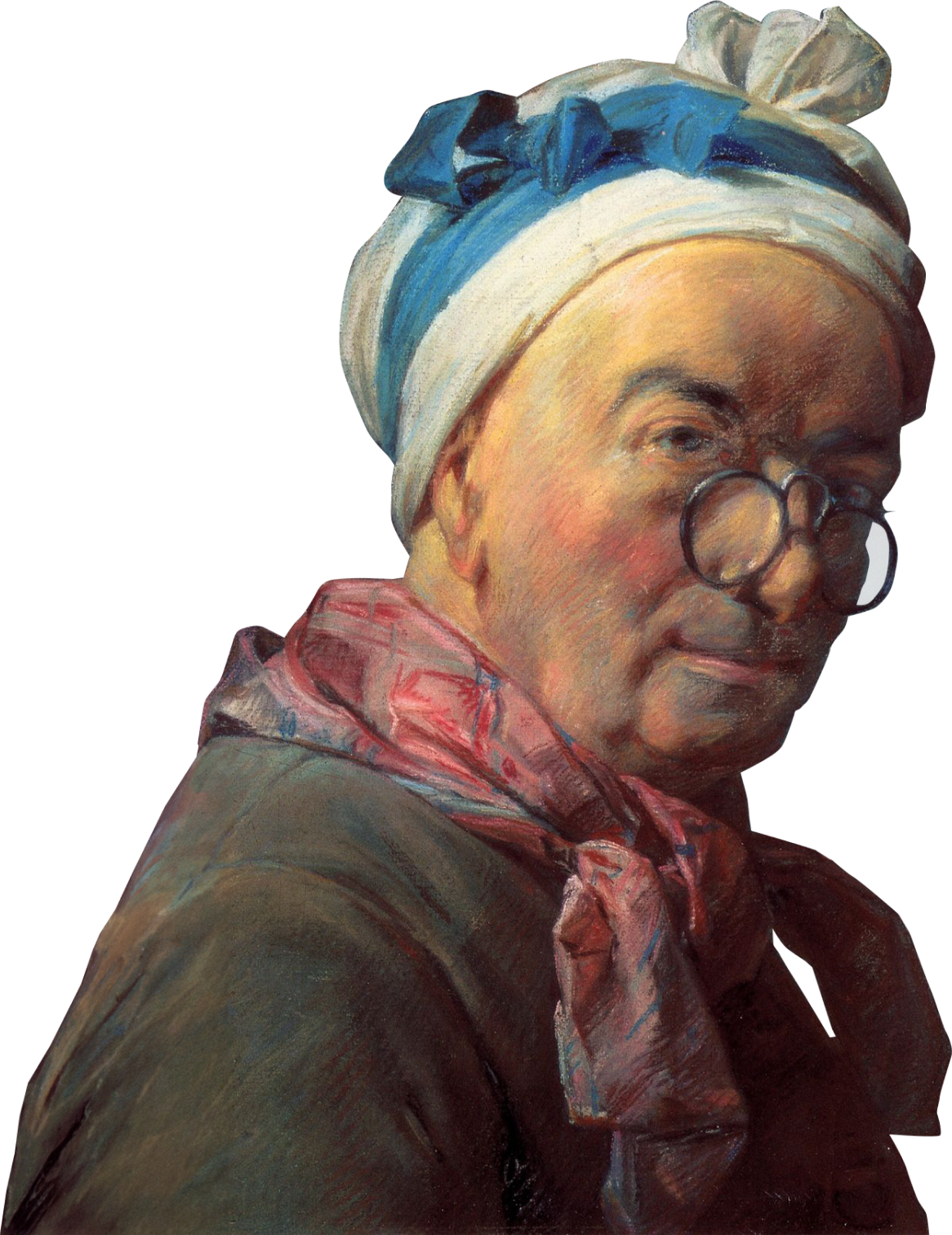
Jean Siméon
Chardin
THE MAGICIAN OF THE STILL LIFE
Chardin and the Louvre
Born on the Rive Gauche: This Parisian painter’s story begins here with his birth on the Rue de Seine in Paris on 2 November 1699. He would spend all eighty years of his life in the same Paris neighborhood.
The Young Painter: At the age of 29, Chardin showed his work on the Place Dauphine, together with other young artists. He exhibited several paintings, two of them emblematic works that are now included in the collections of the Louvre: The Ray and The Buffet.
The Member of the Academy: On 25 September 1728, Chardin was admitted to the Académie Royale de Peinture et de Sculpture as a painter ‘of talent for animals and fruits’. He offered the Academy The Ray and The Buffet, exhibited on the Place Dauphine that same year.
Four Decades of the Salon: In August of 1737, Chardin exhibited at the Salon de Peinture et de Sculpture for the first time. He would continue to exhibit at the Salon until his death forty-two years later. He exhibited Basket of Strawberries as ‘No. 46: other paintings of the same genre under the same number’ on 25 August 1761.
A Residence at the Louvre: In late 1740, Chardin was presented to King Louis XV for the first time. He offered him two paintings: The Industrious Mother and Saying Grace, presented at the Salon in 1740 and preserved today in the Musée du Louvre. In May of 1757 the king granted Chardin ‘residence in the Galleries’ of the Louvre, a testimony to the painter’s continued importance within the Academy.
Last Moments in the Louvre: Chardin died in the Louvre at 9:00 AM on 6 December 1779, at the age of 80. He was buried the next day in the churchyard of Saint-Germain l’Auxerrois, just a few steps away. He was born, lived and worked in the heart of Paris.
Nature morte & scène de genre
BEGINNING IN 1733, CHARDIN TURNED TO GENRE SCENES, EAGER TO SHOW HIS ABILITY TO PAINT ‘MORE NOBLE’ SUBJECTS. THIS PERIOD GAVE RISE TO MASTERPIECES LIKE BOY WITH A SPINNING-TOP (1738) AND THE INDUSTRIOUS MOTHER (1740).
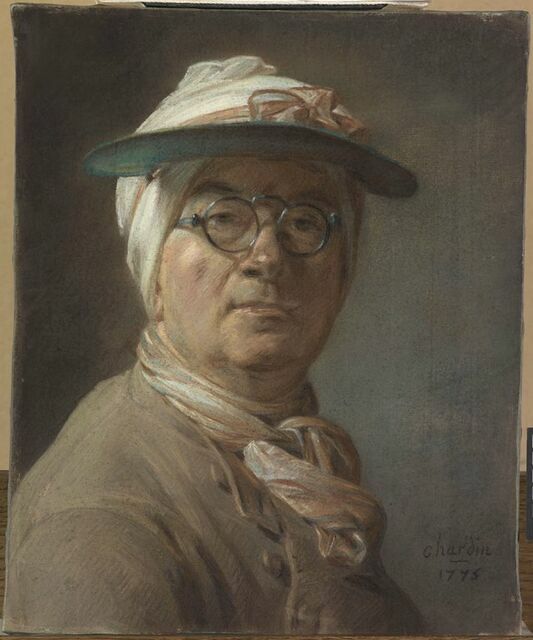
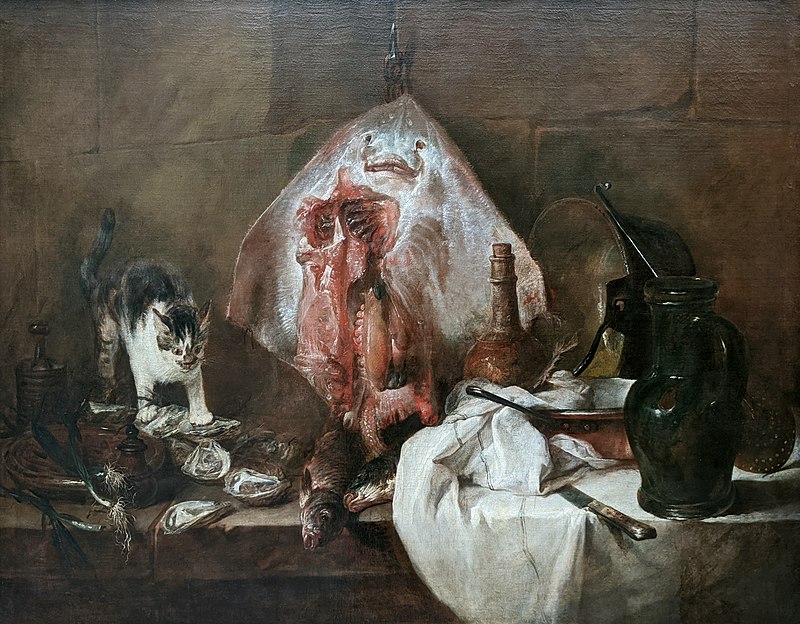
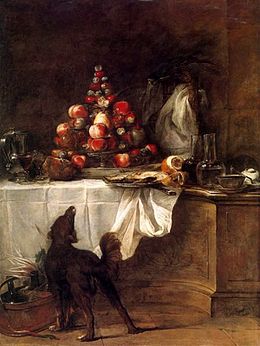
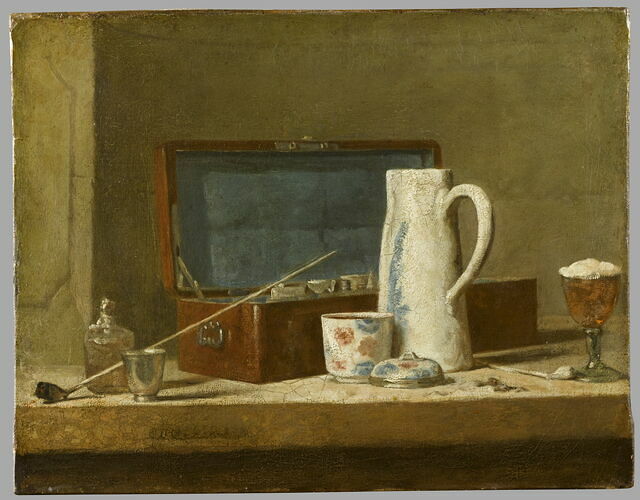
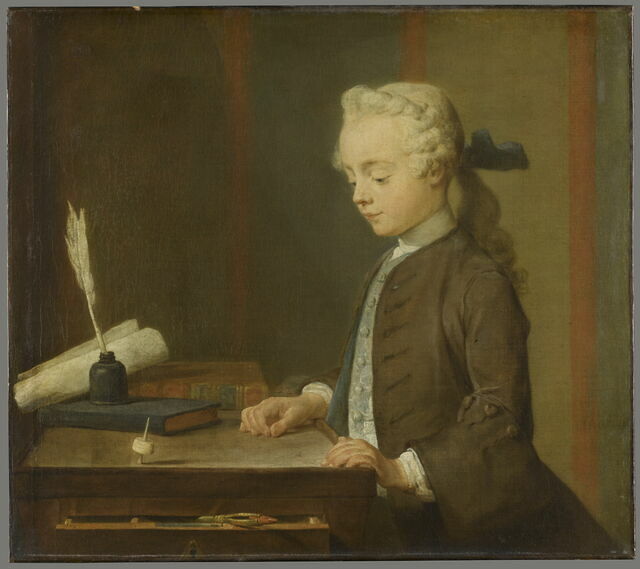
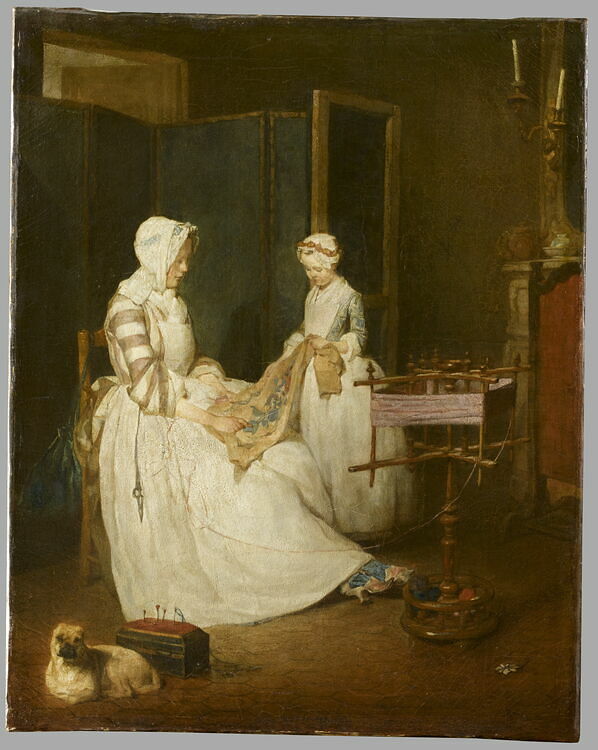
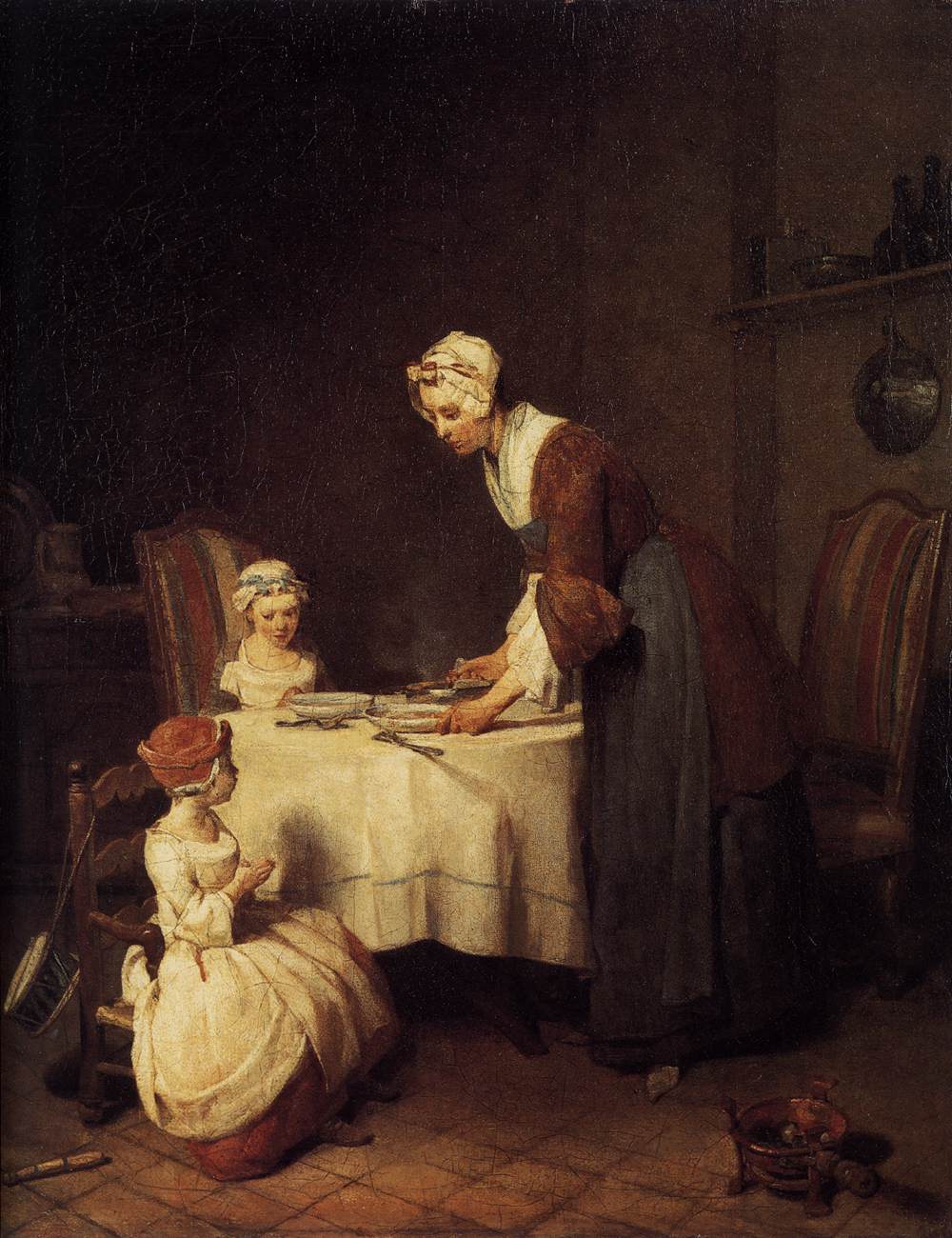
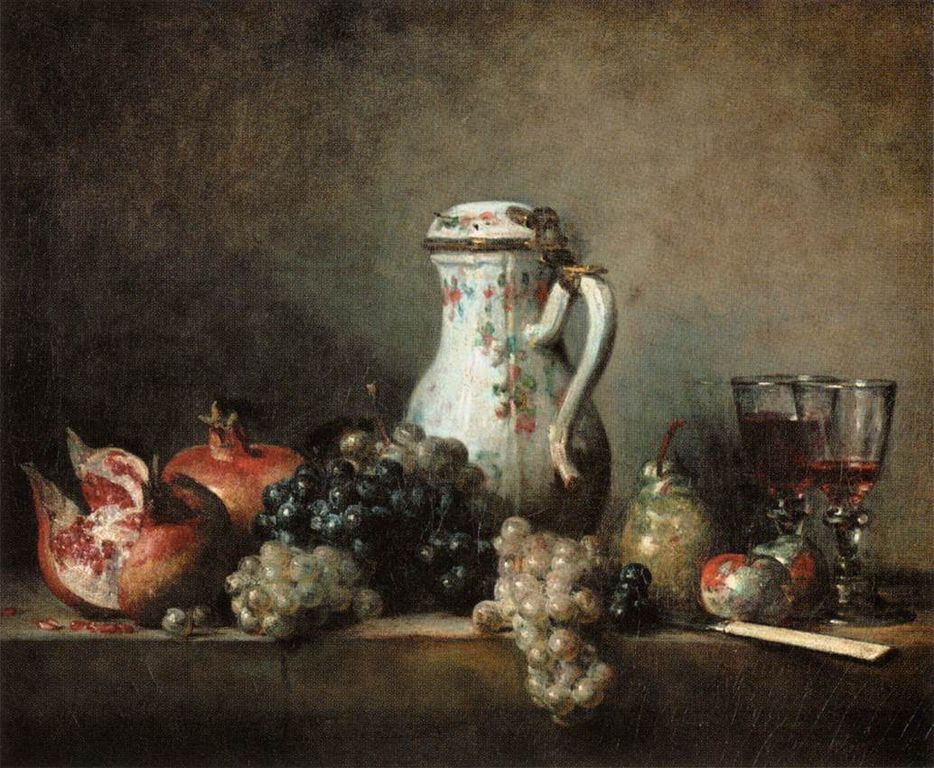
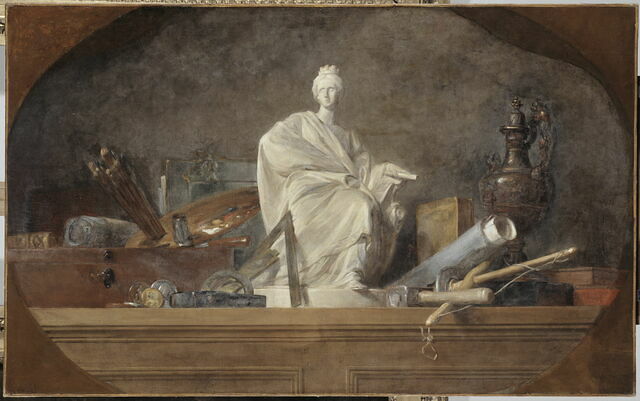
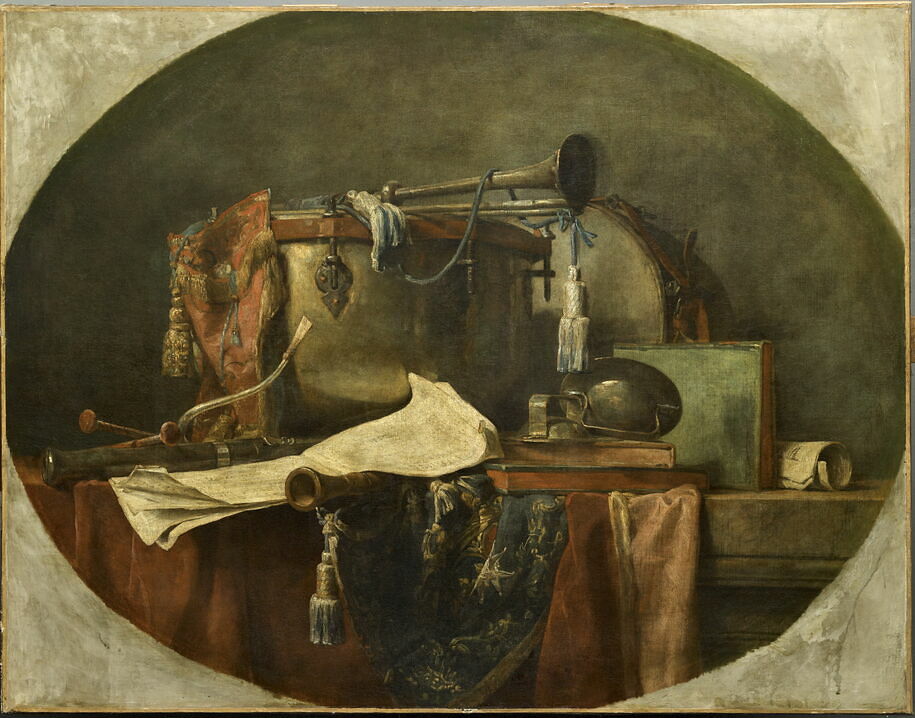
" "We learned from Chardin that a pear is as living as a woman, a common crock as beautiful as a gem." "
Marcel Proust
" "Tell me, celebrated Chardin [...]. Everything pleases in the decoration of your paintings. The eye, deceived by such lightness and the apparent facility reigning there, seeks in vain by attention and repeated attempts to learn the secret from them; it stales itself, it loses itself in your mastery and, weary of its efforts, without ever being surfeited of its pleasure, draws away, comes back again, and leaves it only with the vow of returning to it." "
Louis-Guillaume Baillet de Saint-Julien
" "Chardin is a man of intelligence, and perhaps no one speaks better than he of painting. [...] he understands the magic of colours. He has disseminated that magic in some other compositions, where draftsmanship, invention, and an extreme truthfulness combined have immediately made them objects of great price." "
Denis Diderot
" "O Chardin, it is not white, red, black that you blend on your palette; it is the very substance of objects, it is air and light that you take on the point of your brush and apply to the canvas. [...] We are baffled by such magic." "
Denis Diderot
" "His paintings had, further, a most rare virtue: that of truth and freshness, whether of attitude or composition. Nothing seemed brought in deliberately to compose a group or produce an effect; and yet all his compositions were filled out with an art all the more admirable for being concealed. Independent of the truth and force of his colouring, such natural simplicity was charming to all." "
Charles Nicolas Cochin

